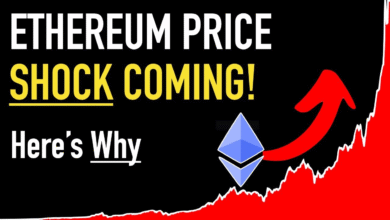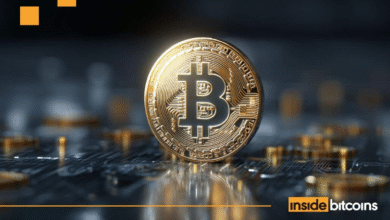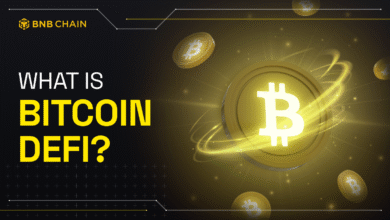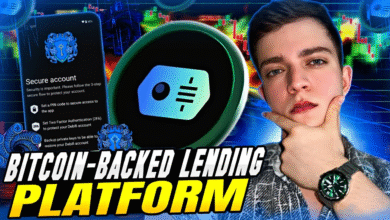Tokenization of Money Market Funds: BNY Mellon & Goldman Sachs
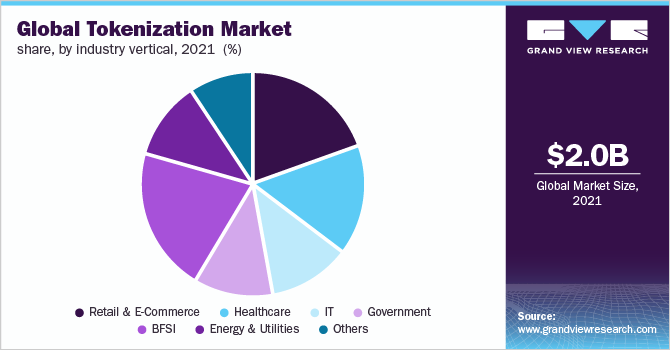
The tokenization of money market funds is heralding a new era in institutional finance, as major players like BNY Mellon and Goldman Sachs leverage blockchain technology to enhance asset flow and transaction efficiency. This innovative approach allows for the conversion of traditional financial assets into digital tokens, making it easier to subscribe to, manage, and trade money market funds. With the U.S. money market fund sector hitting a staggering $7.07 trillion as of mid-2025, the demand for liquidity and seamless transactions has never been higher. By adopting digital asset tokenization, these financial giants are not only modernizing the investment landscape but are also setting the stage for increased transparency and real-time accessibility. As they navigate this transformative journey, the collaboration between BNY Mellon and Goldman Sachs showcases how blockchain in finance can redefine the way institutional investors interact with money market assets and propel the industry forward.
The digitization of cash management strategies, specifically through the implementation of tokenized assets, marks a significant shift in the realm of mutual funds and short-term investments. Financial titans are now exploring advanced solutions that facilitate instantaneous access and transaction capabilities for traditional assets, reflecting an evolving landscape of liquidity and investment management. With initiatives underway to enhance transactional processes within the fund market, firms are redefining the ways institutional clients can engage with their portfolios. The integration of cutting-edge blockchain solutions not only streamlines operations but also enhances regulatory compliance, paving the way for a more accessible financial ecosystem. Thus, the progression towards digital finance is not merely an option but a necessity for future-focused financial institutions.
Understanding Digital Asset Tokenization in Finance
Digital asset tokenization represents a transformative shift in the financial landscape, enabling the conversion of physical assets into digital tokens on a blockchain. This process is essential for enhancing liquidity and efficiency in the trading of financial instruments. Major players like BNY Mellon and Goldman Sachs are at the forefront of this evolution, exploring how tokenization can reshape traditional assets such as money market funds. This innovation not only caters to the growing demand for direct digital asset ownership but also reinforces the integrity of transactions through blockchain’s immutable ledger.
The integration of digital asset tokenization into institutional finance signifies a movement towards a more democratized capital market. By enabling transactions using tokenized money market funds, firms can facilitate immediate settlement processes and reduce the reliance on traditional custodial services. This approach streamlines asset flows, making them programmable and accessible in real time, which appeals especially to institutional investors seeking speed and efficiency in their operations. As we witness further advancements in this space, the potential for digital asset tokenization in financial services appears limitless.
The Role of Blockchain in Money Market Funds
Blockchain technology plays a pivotal role in the tokenization of money market funds, providing a secure and transparent framework for transactions. By leveraging blockchain, BNY Mellon and Goldman Sachs can enhance the efficiency of asset management and custody. The use of mirrored tokens, which reflect the ownership of MMF shares, showcases how blockchain can facilitate seamless transactions and reduce operational risks by automating processes previously prone to errors. As a result, institutional investors can experience faster access to liquidity and better management of assets.
Moreover, blockchain’s decentralized nature offers robust security features that are particularly beneficial for money market fund transactions. As these digital assets are recorded on a distributed ledger, the chances of fraud or mismanagement decrease significantly. Financial giants like BNY Mellon and Goldman Sachs are capitalizing on these advantages to redefine how MMFs are accessed and managed, making the entire process more resilient and streamlined. This advancement could revolutionize asset management protocols, paving the way for a new era in how institutional funds operate.
Investing in Digital Asset Tokenization for Future Growth
As the financial industry continues to evolve, the adoption of digital asset tokenization in money market funds indicates a potential growth trajectory that traditional asset classes are yet to explore fully. Institutions are beginning to recognize the commercial viability of tokenized assets, with BNY Mellon and Goldman Sachs leading the charge by implementing blockchain solutions that promise greater liquidity and efficient trading mechanisms. This strategic move positions them favorably in a competitive landscape, potentially attracting new investors interested in more innovative investment vehicles.
By embracing digital asset strategies, financial institutions can tap into the $7 trillion market of money market funds, ensuring they are not only remaining relevant but also innovating to meet the future demands of investors. As these firms continue investing in technology and partnerships, such as BNY Mellon’s collaboration with Ripple for stablecoin management, the financial landscape could soon see a full-scale transformation, where stored value and traditional assets coexist seamlessly within a digitized ecosystem.
Collaborative Innovations: BNY Mellon and Goldman Sachs
The collaboration between BNY Mellon and Goldman Sachs underscores a significant shift within institutional finance towards embracing technology to improve service delivery. This partnership aims to enhance how money market funds are structured, allowing for real-time transactions and a more fluid approach to asset management. With both institutions investing heavily in their respective digital asset platforms, the implementation of mirrored tokenization represents a forward-thinking model that other financial entities may follow.
Notably, the integration of Goldman Sachs Digital Assets’ blockchain infrastructure within BNY’s LiquidityDirect platform exemplifies how traditional finance can adapt to modern technological demands. This initiative not only marks a technology-led transformation in the fund sector but also reflects a growing trend where major financial organizations recognize the necessity of collaborative efforts to drive innovation. By working together, BNY Mellon and Goldman Sachs are setting a precedent for future collaborations in finance, enabling a more diverse range of investment opportunities for their clients.
Future Perspectives on Blockchain in Institutional Finance
The integration of blockchain within institutional finance heralds a new chapter of efficiency and trust in the realm of money market funds. As both BNY Mellon and Goldman Sachs continue to explore new frontiers in asset management through digital asset tokenization, industry experts anticipate a rise in blockchain adoption across various financial products. This potential advancement promises improvements ranging from enhanced transparency in investment transactions to a streamlined regulatory framework that can adapt to the fast-paced innovation in financial technology.
However, as with any groundbreaking technology, challenges remain. Regulatory compliance is a critical hurdle that institutions must navigate to ensure that the transition to a digital asset framework does not compromise security or investor confidence. Moving forward, it will be essential for BNY Mellon, Goldman Sachs, and others in the space to work closely with regulatory bodies to create frameworks that support innovation while safeguarding the interests of all stakeholders involved in money market funds and beyond.
The Impact of Digital Transformation on Asset Management
Digital transformation is reshaping asset management by enhancing operational efficiencies and enabling smarter investment strategies. The collaborative initiative by BNY Mellon and Goldman Sachs to tokenize money market funds is a direct response to the growing acceptance of digital assets in traditional finance. This evolution empowers institutional investors to engage with funds in novel ways, offering real-time access and enhancing the overall investment experience.
Moreover, this digital shift signifies a broader adaptation to market demands for flexibility and transparency. The capacity to digitally subscribe and redeem shares in MMFs through tokenization not only accelerates transactions but also aligns with investor preferences for greater control and visibility over their assets. As digital transformation continues to redefine asset management practices, traditional financial institutions must embrace these changes to sustain their competitive edge.
Benefits of Tokenized Money Market Funds
Tokenized money market funds present numerous advantages, particularly in terms of liquidity and efficiency. By leveraging blockchain technology, institutional investors can experience faster transaction times and reduced operational costs. The ability to trade tokenized MMF shares in real-time reflects a significant advancement over traditional methods, where delays and additional fees often burden transactions. This new paradigm enables investors to make informed decisions swiftly, thereby enhancing their potential returns.
Additionally, as firms expand their custody capabilities through partnerships such as that of BNY Mellon with Ripple, it becomes clear that tokenization’s benefits are not merely limited to transaction speeds. Enhanced security and transparency foster greater trust among investors, which is paramount in the highly regulated financial environment. Furthermore, tokenizing money market funds enables more diverse investor participation, democratizing access to these traditionally exclusive financial products.
Challenges and Considerations for Digital Asset Integration
While the prospect of tokenized money market funds is exciting, there are challenges that must be addressed for widespread adoption. One significant hurdle is navigating the regulatory landscape that governs digital assets. Financial institutions, including BNY Mellon and Goldman Sachs, must work closely with regulators to develop frameworks that not only foster innovation but also ensure investor protection and compliance with existing laws.
Additionally, operational complexities such as integrating legacy systems with new blockchain technologies can be daunting. Financial firms need to invest in training and resources to ensure staff are equipped to handle digital assets effectively. As these challenges are acknowledged and addressed, the financial industry stands poised for a significant transformation, with tokenization of money market funds leading the way as a viable solution for modern investment strategies.
The Future of Investments with Blockchain Technology
The future of investments is increasingly being written in blockchain technology, especially with the push from financial giants like BNY Mellon and Goldman Sachs. As blockchain matures, its ability to facilitate efficient, transparent, and cost-effective transactions is drawing significant interest from institutional investors. The innovative approach of tokenizing money market funds could serve as a blueprint for future investments across various classes of assets, allowing for real-time asset movements and improved liquidity.
Moreover, as the market adapts to these digital changes, investors will likely benefit from a broader range of investment products that are enhanced by technology. The evolution of financial products towards more user-friendly formats, driven by technological advancements and collaboration among leading financial institutions, suggests a notable pivot in the investment landscape. Embracing blockchain will likely not only redefine how value is stored and exchanged but also create a more inclusive financial ecosystem.
Frequently Asked Questions
How does tokenization of money market funds work?
Tokenization of money market funds involves creating digital tokens that represent ownership of the fund shares on a blockchain. This process allows for real-time transactions, as investors can digitally subscribe and redeem their shares through platforms like BNY’s LiquidityDirect, supported by Goldman Sachs’ blockchain technology.
What are the benefits of tokenization of money market funds?
The tokenization of money market funds enhances liquidity, allows for faster transactions, and provides better transparency in ownership records. By utilizing blockchain, investors can experience seamless transfers and reduced operational costs associated with traditional fund management.
Which companies are leading the tokenization of money market funds?
BNY Mellon and Goldman Sachs are at the forefront of the tokenization of money market funds, collaborating to implement a blockchain-based solution that allows institutional clients to access MMFs more efficiently through mirrored tokens.
What is the significance of the $7 trillion market in the context of money market fund tokenization?
The $7 trillion market represents the vast potential and demand for money market funds, making it a prime target for innovative financial solutions like tokenization. By integrating blockchain technology, BNY Mellon and Goldman Sachs aim to unlock new efficiencies in this substantial market.
How are blockchain technology and digital asset tokenization reshaping finance?
Blockchain technology and digital asset tokenization are reshaping finance by introducing programmable assets that enhance transaction speed, transparency, and security. The ongoing collaboration between firms like BNY Mellon and Goldman Sachs emphasizes a significant shift toward modernizing capital markets.
What regulatory challenges does the tokenization of money market funds face?
The tokenization of money market funds faces regulatory challenges that include compliance with existing financial laws and regulations. It is crucial for firms like BNY Mellon and Goldman Sachs to navigate these regulations to ensure the legality and stability of their blockchain initiatives.
What impact will tokenization have on institutional investors?
Tokenization of money market funds will impact institutional investors by providing them with greater liquidity, easier access to fund shares, and improved operational efficiencies through the use of blockchain technology, aligning with the evolving needs of the financial market.
How does BNY Mellon’s partnership with Ripple relate to the tokenization of money market funds?
BNY Mellon’s partnership with Ripple, which includes managing the USD stablecoin RLUSD, complements the tokenization of money market funds by enhancing trust and efficiency in the movement of digital assets, thus supporting broader applications in blockchain finance.
What are mirrored tokens in the context of money market fund tokenization?
Mirrored tokens are digital representations of money market fund shares created on Goldman Sachs’ blockchain platform. These tokens allow for the digital subscription and redemption of fund shares, enhancing the functionality and transferability of money market assets.
What future developments can be expected from the tokenization of money market funds?
Future developments in the tokenization of money market funds may include improved cross-platform transferability, enhanced compliance, and broader adoption of blockchain technology in finance, potentially leading to a more integrated and efficient capital market landscape.
| Key Points |
|---|
| BNY Mellon and Goldman Sachs collaborate to tokenize money market funds using blockchain technology. |
| They aim to tap into a $7 trillion market by enabling clients to access MMFs via BNY’s LiquidityDirect platform. |
| The project uses mirrored tokens on Goldman Sachs’ proprietary blockchain (GS DAP) to represent ownership. |
| Initial participants include major asset managers like Blackrock and Fidelity Investments. |
| BNY Mellon will maintain official custody and ensure regulatory compliance for the MMF transactions. |
| This initiative aims to enhance collateral mobility and improve asset transferability in finance. |
| The partnership with Ripple further solidifies BNY Mellon’s commitment to digital assets and stablecoins. |
Summary
The tokenization of money market funds is revolutionizing the financial industry, as evidenced by the strategic collaboration between BNY Mellon and Goldman Sachs. By leveraging blockchain technology, these institutions are setting the stage for a more dynamic and accessible market valued at approximately $7 trillion. This initiative not only allows for real-time transactions and enhanced liquidity but also promises to modernize the traditional asset management landscape. As major players embrace digital transformation, the future of finance looks poised for significant change.

